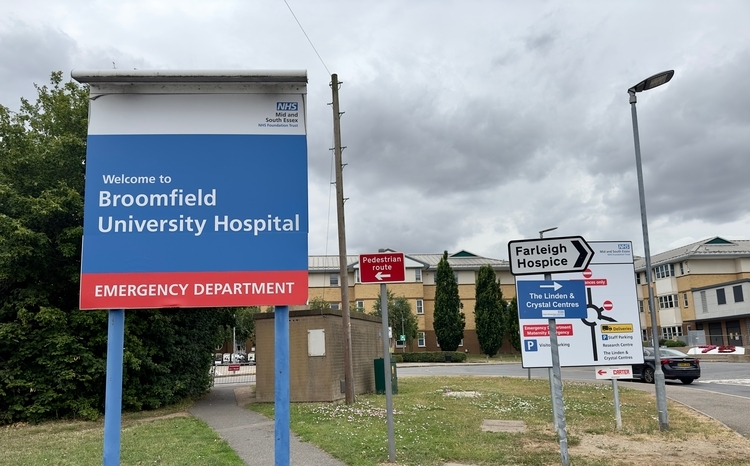Paperless without a PAS
- 9 June 2009
.jpg) |
|
Stephen Parsons, |
Sarah Bruce talks to Stephen Parsons, IM&T projects manager at Trafford Healthcare NHS Trust, about how it is on the way to becoming paperless without a patient administration system.
Parsons admits that at the beginning of the decade, Trafford Healthcare NHS Trust was far behind many other NHS organisations in terms of its IT.
However, Parsons does not see this as a disadvantage. When E-Health Insider visited the trust recently, he argued that many of the projects that it is now under-taking were only possible because it had a blank canvas to work with.
“Nine years ago our secretaries didn’t even have Microsoft on their computers. The fact that we were so behind meant we were free to pick and choose what we wanted and weren’t tied down to anything,” he said.
Over the past few years, Trafford has invested in an electronic patient record from Graphnet and a scheduling system from UltraGenda that has allowed it to switch off its legacy patient administration system.
On these foundations, it has implemented an advanced bed management system, ordering and communications, record and blood tracking and other ‘best of breed’ applications. It is now planning to go completely paperless by next summer.
Parsons says that in doing all this, the trust has kept in mind the vision for EPRs set out by the 1998 healthcare IT strategy Information for Health, which align fairly closely with the Clinical 5 IT requirements for acute trusts set out by the Department of Health last year.
However, its approach contrasts with that of the National Programme for IT in the NHS, although Parsons says the majority of technologies that the trust has chosen could “co-exist” or have been “neatly aligned” with it.
In a recent trust board paper, he noted that the trust’s scheduling system is Choose and Book compliant, that it can feed information to the secondary uses service, and that it is capable of supplying information to the national Summary Care Record.
On the other hand, in the same board paper he noted that the well-documented delays to the national programme’s PAS and EPR systems “have not directly affected either patient or clinician” at Trafford Healthcare Trust.
It also says that even if national solutions become available, considerable risk analysis will be needed to make sure “it does not suffer the fate of other trusts who have lost considerable income through a shortcoming in the promised functionality.”
From PAS to EPR and scheduling
The first step on the trust’s journey towards being paperless was the implementation of an EPR from Graphnet in 2003.
“The idea of an electronic patient record was only just emerging, and XML EPRs were the talk at the time,” said Parsons. “As a result, we chose an EPR from Graphnet which was XML based.”
After the implementation of the EPR, the trust’s 20 year old PAS seemed incapable of keeping up. The trust decided that it was outdated and removed it completely; replacing it with a scheduling system from UltraGenda.
Parsons continued: “The old Torex PAS was increasingly expensive to maintain and support; in fact it was costing around £120,000 per year. We soon realised that the functionality could be better performed by web based technology.”
The PAS was replaced overnight in May 2008, with the scheduling application taking on much of its functionality and other parts of the PAS, such as coding, built into the new system.
The EPR and the scheduling application between them now handle all patient registration, outpatient, inpatient and theatre appointment booking and scheduling, clinical coding and data activity reporting.
They also interface with other systems, provide workflow functions for the Immediate Discharge Summary (IDS) and To Take Out medicines, and link to a medical case note tracking system based on bar coding that allows records to be tracked to individual offices and shelves.
Using best of breed
Since then, Trafford has implemented several other ‘best of breed’ systems and has been working with Trafford Primary Care Trust to share information across both primary and secondary care.
One project has been to implement an active bed management system from UltraGenda, called UGBedman, which is billed as the first of its kind in Europe.
Parsons said: “There was a slight problem with ADT [admissions, transfers and discharge] so we also began using UltraGender’s bed management system, which provides real bed-time states, bed occupancy planning and discharge management.”
The trust has also implemented PACS and is in the process of implementing a pathology test and reporting system that supports automated electronic results ordering and reporting for both Trafford GPs and Trafford General Hospital clinicians.
The system also interfaces with the trust’s blood tracking system, which helped the trust win the BT e-Health Insider Healthcare Business Support ICT Team of the Year in 2007.
More recently, the trust has implemented an SMS and calling reminder service for its appointment system, which is typically used in primary care.
Parsons said: “The system automatically links via web services to the scheduling system to text and call around 1,000 people per evening to remind them of their appointment and confirm their attendance. The method helps run 100% full clinics and removes the need for paper reminders and follow-ups.”
Leaner yet
The trust has now embarked on a ‘Lean’ project and is at the stage of reviewing its IT procedures. As part of this project, it has identified a ‘no notes plan.’
Parsons said: “We are aiming to remove paper case notes by this time next year, which will be underpinned by our EPR. We are also removing the need for paper wherever possible across the trust.”
Parsons recognises that there are several ways of doing this. He said: “I am really intrigued by digital pens and paper, which have recently been made available to trusts; we also need to look at mobile computing and also running wards in a more visual way, for example, providing a whole ward view.
“We are also working with Birmingham Heart of England NHS Foundation Trust and looking at their electronic hand-over system.”
The trust also hopes to create a shared care record, as the EPR system not only sits at the core of clinical information provision for clinical staff but has a separate level of functionality dedicated to provision of information for GPs.
Initially, both primary care GPs and secondary care clinicians could view both parts of its records; the Trafford Healthcare Trust secondary records and the GP extracted data records.
However, in November 2007, Trafford PCT requested that access to the GP extract for THT consultants, doctors and pharmacists’ should be withdrawn.
Parsons said: “The GP systems are not currently providing daily data to the primary care section but could do with minimal effort, estimated at about 1-2 weeks work.”
He added: “The trust is talking about changing to an integrated care organisation, providing a more joined up shared record function. Discussions are already going on at regarding how share records should be made available and how they can be exploited to their maximum potential.”
Link
An overview of the messaging architecture, EPR functionality and suppliers for each system used at Trafford Healthcare NHS Trust can be found in an appendix to the chief executive’s 2009 report.
Awards: Entries for this year’s E-Health Insider Awards in association with BT are open now. If your team is doing great work for your hospital or other healthcare organisation, why not enter?
Related articles
Trafford enables GPs and Hospitals to share EPR




